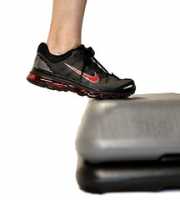MedicalResearch.com Interview with:
Kristen M. Beavers PhD, MPH, RD
Assistant Professor, Department of Health and Exercise Science
Department of Biostatistical Sciences
Wake Forest School of Medicine
Winston-Salem, NC
MedicalResearch.com: What is the background for this study? What are the main findings?
Response: Weight loss recommendation for older adults with obesity is controversial, in part because overall weight loss is accompanied by loss of muscle and bone, which may exacerbate age-related risk of disability and fracture. Identification of interventions that can preserve muscle and bone while promoting fat loss should maximize cardiometabolic benefit, while minimizing potential harm to the musculoskeletal system.
This randomized controlled trial was originally designed to test whether a higher protein, nutritionally complete meal plan could preserve lean mass and mobility in older adults undergoing a six month intentional weight loss program. Four publications have resulted from this study: * “Effect of an Energy-Restricted, Nutritionally Complete, Higher Protein Meal Plan on Body Composition and Mobility in Older Adults with Obesity,” Journals of Gerontology: Medical Sciences, published online in advance of print June 21, 2018 * “Effect of a Hypocaloric, Nutritionally Complete, Higher-Protein Meal Plan on Bone Density and Quality in Older Adults With Obesity,” American Journal of Clinical Nutrition, published online in advance of print Jan. 9, 2019 * “Effect of Intentional Weight Loss on Mortality Biomarkers in Older Adults With Obesity,” Journals of Gerontology: Medical Sciences, published online in advance of print Aug. 20, 2018 * “Effects of a Hypocaloric, Nutritionally Complete, Higher Protein Meal Plan on Regional Body Fat and Cardiometabolic Biomarkers in Older Adults with Obesity,” Annals of Nutrition and Metabolism, published online in advance of print Feb. 11, 2019
Across the four publications, we found that:
* Participants lost about 18 pounds, most of it fat (87 percent), and preserved muscle mass. The control group lost about half a pound.
* Even when participants lost weight, they maintained bone mass. In fact, trabecular bone score, a measure of bone quality which predicts fracture risk, seemed to improve.
* Fat was lost in the stomach, hips, thighs and rear, which is important for preventing or controlling cardiometabolic diseases such as diabetes and stroke.
* Participants’ score on the Healthy Aging Index, which measures biomarkers that predict mortality and longevity, improved by 0.75 points.
(more…)
















 Dr Paul Gentil
Faculty of Physical Education and Dance
Federal University of Goias
Goiania, Brazil
MedicalResearch.com: What is the background for this study? What are the main findings?
Response: Although being overweight and/or obese are associated with numerous health risks, the prevalence of both are continuing to increase worldwide. The treatment would include anything that results in an increase in energy expenditure (exercise) or a decrease in energy intake (diet). However, our metabolism seems to adapt to variations in physical activity to maintain total energy expenditure. Although lower-than-expected weight loss is often attributed to incomplete adherence to prescribed interventions, there are other factors that might influence the results, such as, metabolic downregulation.
So, instead of making people spend more calories, maybe we have to think on how to promote metabolic changes in order to overcome these physiological adaptations above-mentioned. In this regard, high intensity training might be particularly interesting as a strategy to promote fat loss. Irrespective the amount of calories spent during training, higher intensity exercise seems to promote many physiological changes that might favor long-term weight loss. For example, previous studies have shown that interval training is able to promote upregulation of important enzymes associated with glycolysis and beta oxidation pathways, which occurs in a greater extent than with moderate intensity continuous exercise.
Our findings suggest that interval training might be an important tool to promote weigh loss. However, I t might be performed adequately and under direct supervision in order to get better results.
Dr Paul Gentil
Faculty of Physical Education and Dance
Federal University of Goias
Goiania, Brazil
MedicalResearch.com: What is the background for this study? What are the main findings?
Response: Although being overweight and/or obese are associated with numerous health risks, the prevalence of both are continuing to increase worldwide. The treatment would include anything that results in an increase in energy expenditure (exercise) or a decrease in energy intake (diet). However, our metabolism seems to adapt to variations in physical activity to maintain total energy expenditure. Although lower-than-expected weight loss is often attributed to incomplete adherence to prescribed interventions, there are other factors that might influence the results, such as, metabolic downregulation.
So, instead of making people spend more calories, maybe we have to think on how to promote metabolic changes in order to overcome these physiological adaptations above-mentioned. In this regard, high intensity training might be particularly interesting as a strategy to promote fat loss. Irrespective the amount of calories spent during training, higher intensity exercise seems to promote many physiological changes that might favor long-term weight loss. For example, previous studies have shown that interval training is able to promote upregulation of important enzymes associated with glycolysis and beta oxidation pathways, which occurs in a greater extent than with moderate intensity continuous exercise.
Our findings suggest that interval training might be an important tool to promote weigh loss. However, I t might be performed adequately and under direct supervision in order to get better results.












 Sean C. Rose, MD
Pediatric sports neurologist and co-director
Complex Concussion Clinic
Nationwide Children’s Hospital
Assistant professor of Pediatrics
The Ohio State University
MedicalResearch.com: What is the background for this study? What are the main findings?
Response: The link between sub-concussive head impacts and declines in neurocognitive function has been reported by some studies, yet refuted by others. There is very little evidence that has been collected in children as they are sustaining these head impacts.
We initiated a multi-year study of youth football players to provide a more in-depth look at the question. We measured head impacts using helmet sensors during the 2016 football season. 112 players age 9-18 completed a battery of neurocognitive tests before and after the football season.
We found that neither the total burden of head impacts nor the intensity of individual impacts were associated with changes in testing performance from pre to post-season.
Sean C. Rose, MD
Pediatric sports neurologist and co-director
Complex Concussion Clinic
Nationwide Children’s Hospital
Assistant professor of Pediatrics
The Ohio State University
MedicalResearch.com: What is the background for this study? What are the main findings?
Response: The link between sub-concussive head impacts and declines in neurocognitive function has been reported by some studies, yet refuted by others. There is very little evidence that has been collected in children as they are sustaining these head impacts.
We initiated a multi-year study of youth football players to provide a more in-depth look at the question. We measured head impacts using helmet sensors during the 2016 football season. 112 players age 9-18 completed a battery of neurocognitive tests before and after the football season.
We found that neither the total burden of head impacts nor the intensity of individual impacts were associated with changes in testing performance from pre to post-season.